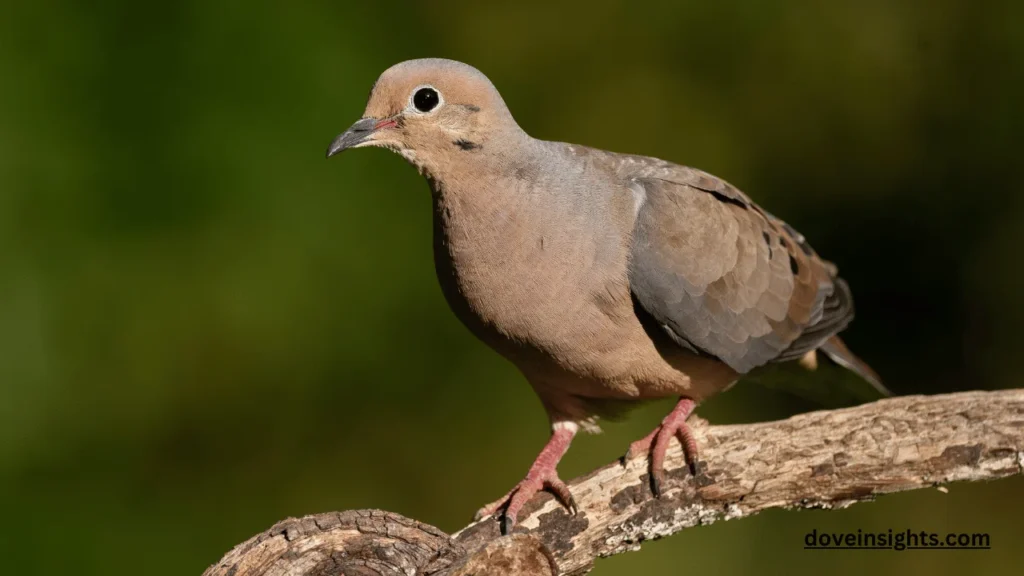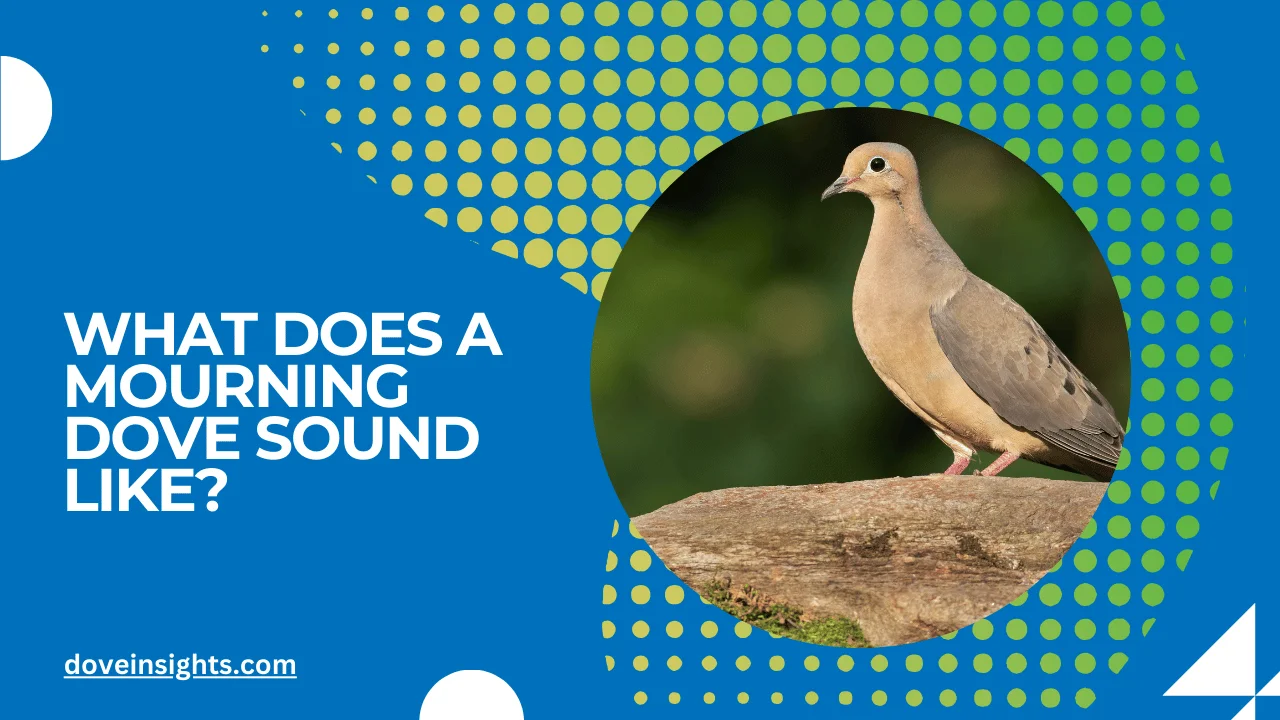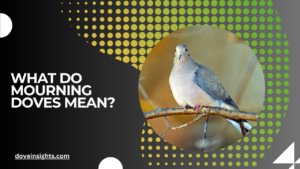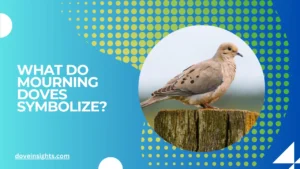If you’ve ever paused in your backyard or taken a quiet walk through the park, you might have heard a sound so hauntingly beautiful that it lingers in your mind.
The mournful cooing of a Mourning Dove is one of nature’s most recognizable and soothing melodies. But what exactly does a Mourning Dove sound like, and why does its call evoke such a mix of emotions?
The Mourning Dove’s song has captivated birdwatchers, nature enthusiasts, and poets for centuries.
Its soft, cooing call is often mistaken for a lament, giving the bird its poignant name. However, this sound is more than just a beautiful song—it’s a complex form of communication, with calls that serve purposes ranging from mating to territory defense.
This article dives deep into the sounds of the Mourning Dove, exploring their meaning, variations, and significance.
Whether you’re a seasoned birdwatcher or a curious listener, understanding these vocalizations will open up a new dimension of appreciation for these gentle birds.
Contents
Overview of Dove Species and Their Habitats
Doves are a diverse group of birds, including species like the Mourning Dove, Eurasian Collared Dove, and Rock Dove (commonly known as Pigeon).
These species are found across the globe, inhabiting a range of environments from urban parks to remote forests. Mourning Doves, for instance, are widespread in North America and thrive in grasslands and suburban areas, while Eurasian Collared Doves are adaptable and often found near human settlements.
The habitats doves occupy play a critical role in shaping their diet. In urban areas, they might consume more human-provided food, such as bread or seeds, while doves in the wild primarily feed on natural resources like seeds and fruits.
Their ability to adapt their diet to their surroundings ensures their survival across varied environments, from bustling cities to serene woodlands.
Natural Diet of Wild Doves
In the wild, doves primarily consume seeds, grains, fruits, and occasionally small insects. Their diet is dominated by favorites like grass seeds, millet, and sunflower seeds, which are readily available in their natural habitats.
These foods not only provide essential nutrients but also fuel their energy-intensive activities, such as flying and foraging.
Interestingly, the diet of wild doves changes with the seasons. In the fall, they may consume berries, which are abundant during this time and offer high nutritional value. Their feeding behavior is fascinating—they forage mostly on the ground, using selective pecking to choose the best seeds and grains.
This diet ensures that they remain healthy and active throughout the year.
Doves in Captivity or Urban Settings
The diet of doves living in captivity or urban environments often differs significantly from their wild counterparts.
Pet doves are typically fed commercial dove food mixes that include a balanced blend of seeds, grains, and pellets. Owners often supplement this diet with fresh fruits and vegetables like apples, carrots, and spinach to ensure optimal nutrition.
In urban areas, doves may rely on human-provided food, which can sometimes be harmful. Feeding doves bread, chips, or other junk food can lead to serious health problems, including nutrient deficiencies and obesity.
To protect urban doves, it’s essential to provide them with healthy food options, such as seeds or unsalted nuts.
Nutritional Needs of Doves
Doves have specific nutritional requirements that are essential for their health and well-being. Their diet should include protein for muscle maintenance, fiber for proper digestion, and calcium for strong bones and eggshell production.
A nutrient-rich diet also promotes vibrant, healthy feathers, which are critical for flight and insulation.
Poor diets can lead to health issues in doves, such as obesity or calcium deficiencies that may affect their ability to reproduce.
Pet owners and bird enthusiasts should pay close attention to the quality of food doves consume, ensuring they meet all their dietary needs to thrive in any environment.
How to Attract and Feed Doves in Your Backyard

If you want to attract doves to your yard, setting up a dove-friendly feeding station is a great place to start. Use feeders that can accommodate seeds like millet, safflower, and sunflower seeds, which doves love.
Additionally, providing a source of fresh water for drinking and bathing will encourage them to visit regularly.
Planting dove-friendly vegetation, such as berry bushes and seed-producing flowers, can also create a sustainable food source.
These natural options not only benefit doves but also enhance the overall biodiversity of your backyard. A welcoming environment will ensure that doves return season after season.
Conclusion
Doves are remarkable birds with diverse diets that adapt to their habitats and circumstances. From consuming seeds and fruits in the wild to thriving on carefully curated diets in captivity, their nutritional needs are both fascinating and essential to understand.
Creating dove-friendly environments, whether through feeding stations or natural plants, helps support their populations while allowing us to enjoy their peaceful presence.
By understanding what doves eat and providing for their needs, we strengthen our connection to these gentle birds and ensure their continued survival.
Whether in urban parks or our own backyards, the harmonious cooing of doves reminds us of the beauty and simplicity of nature.
FAQ’s
What does a Mourning Dove sound like?
Mourning Doves produce a soft, mournful “coo-OO-oo” sound that is soothing and easily recognizable.
Why is it called a Mourning Dove?
The bird is named for its melancholic-sounding coo, which resembles a lament or mourning.
Do Mourning Doves make different sounds?
Yes, they have various calls, including mating calls, alarm calls, and distress calls, each serving a specific purpose.
When are Mourning Doves most vocal?
They are most vocal during the spring and summer, especially during the mating season.
Can Mourning Doves mimic other birds?
No, Mourning Doves do not mimic other birds; their vocalizations are unique to their species.
How far can a Mourning Dove’s call travel?
Their low-pitched calls can carry over long distances, especially in quiet environments.








